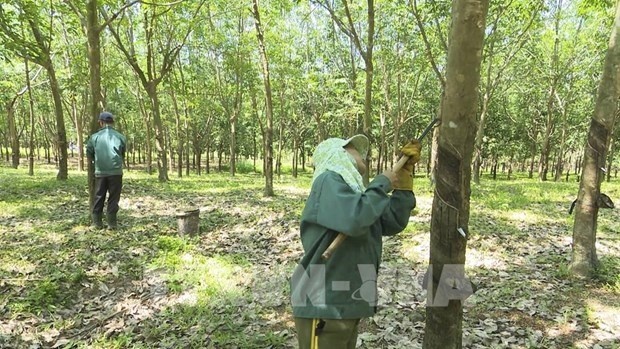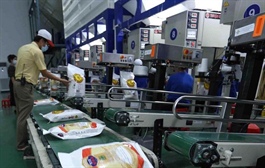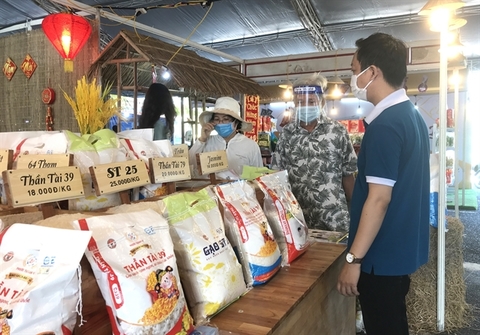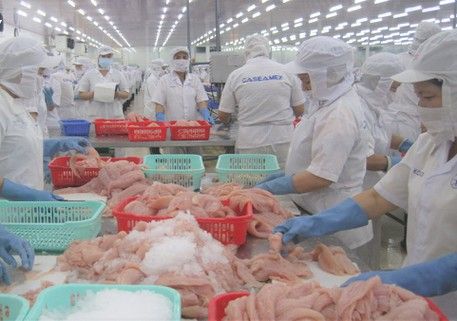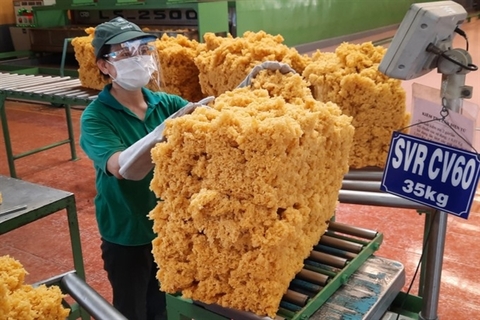Dragon fruit farmers count their losses as China exports fall to a trickle
Dragon fruit farmers count their losses as China exports fall to a trickle
Dragon fruit prices are falling sharply because it cannot be exported to China, and farmers are in dire need of support from the Government, experts said.
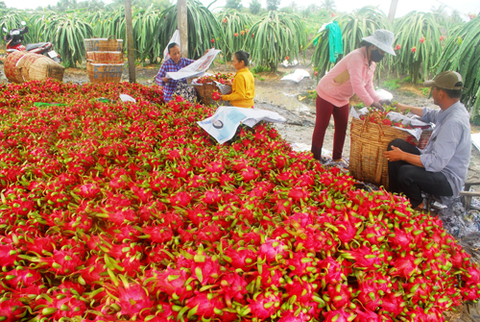
China has increased quality requirements for agricultural imports, posing a challenge to Viet Nam’s agricultural production and exports and requiring rapid adaptation, experts and experienced businesses said.
Exports of agricultural products through border gates to that country are facing huge difficulties.
Thousands of container trucks are stranded at the border, queuing for customs clearance, according to Au Anh Tuan, director of the Customs Control and Supervision Department.
But more trucks continue to arrive, worsening the situation.
Authorities are now looking at ways to get the trucks cleared to cross the border at a faster pace and ease the congestion.
China’s tightened COVID-19 preventive measures for people, vehicles and goods packaging have led to customs clearance becoming much slower than normal at some border gates.
The inability to export to China has caused a sharp drop in agricultural prices, and farmers are facing big losses.
According to their calculations, a kilogramme of off-season dragon fruit must sell for VND7,000-10,000 per kilogram to break even due to the high cost of fertilisers and electricity, but currently prices are VND1,000-2,000, and even VND500 in some places.
The cost of labour for harvesting is VND600 per kilogramme.
Export by sea is too expensive.
Container shipping costs in Viet Nam have quadrupled, even increased eight-fold, on certain high-demand routes from pre-pandemic levels, SSI Research said.
Huynh Canh, vice chairman of the Binh Thuan Province Dragon Fruit Association, said shipping cost had increased from US$1,600 per container at the beginning of 2020 to $5,000 by year-end, and now it costs $9,100.
According to the Vietnam Maritime Administration (VMA), the pandemic has forced shipping companies to cut back on operations, causing a shortage of empty containers, while the closure of many ports around the world has also contributed to rising shipping costs.
To help farmers, the Binh Thuan Dragon Fruit Association are looking at domestic consumption channels like traditional markets and supermarkets, but demand is modest.
Nguyen Tuan Thanh, director of the province Department of Industry and Trade, said his department helped the Long An Dragon Fruit Association sell its members’ products to supermarket chains, large stores, wholesale markets, and shopping malls across the country.
Nguyen Quoc Thinh, chairman of the Dragon Fruit Association of Long An Province, said the fruit would be harvested until the Lunar New Year and farmers had expected to get a price of VND15,000 ($0.66) per kilogramme.
But with exports to China falling to a trickle, the association had urged authorities to step up promotion to help find customers elsewhere, especially in India, and develop the domestic market through supermarket chains to reduce dependence on China.
With vegetarians making up a large proportion of the Indian population and people there consuming imported dragon fruit at weddings, it is potentially a huge market for Viet Nam, experts said.
Viet Nam grows around 1.4 million tonnes of dragon fruit a year, more than 60 per cent of it in the second half of the year.
In 2021 exports, mainly to China, fetched over $998 million.
To create demand for the fruit, it is necessary to hold more trade forums to promote it globally and also develop the domestic market, experts say.





